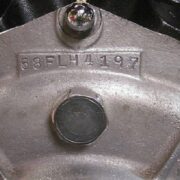Your vehicle has plenty of parts that you know to check regularly. Examine the body for paint scratches or dents, check under the hood, keep an eye on your oil, inspect the tires for leaks, make sure the interior is being maintained, check the lights and battery, etc. These are all things you’ll likely see just through normal operation anyway because they’re easy to spot.
But what about the parts you don’t normally see? It’s just as important to check under your vehicle as it is to check everywhere else. Neglecting to do this can cost you greatly in the long run.
What is the undercarriage?
First, it’s important to understand exactly what the undercarriage, or chassis, is. In simple terms, it’s essentially the structure underneath the car between the body and the wheels. It’s comprised of many important parts including the axles, muffler, exhaust, transmission system, and brake lines. It’s imperative that you keep an eye on all of these undercarriage parts, and take care to repair or replace them when needed. It’s also advisable that you have the undercarriage inspected whenever you’re considering purchasing a car, especially when buying used.
Damage and consequences
Despite the importance of the undercarriage parts, this part of the vehicle frequently gets less attention than others when it comes to maintenance. They tend to take a beating from most road conditions due to rocks, mud, dirt, and other types of debris. One of the most common types of damage the undercarriage typically sees is rust. Damage like this can lead to corrosion of crucial components, and something like brake line failure can be catastrophic.
In addition to rust, it’s common for the undercarriage to build up grime over time, which interferes with how the vehicle disperses heat. Make sure you aren’t neglecting the undercarriage when you take your vehicle in for a wash. In addition to possible overheating issues, a dirty undercarriage will increase your risk for parts rusting, which leads to costly repairs or unsafe conditions in general. It’s worth purchasing your own inspection mirror, so you can check your conditions yourself. Even if you aren’t a mechanic, there’s no substitute for firsthand knowledge.
Repairs
If your vehicle’s undercarriage does become damaged enough to warrant repairs, it shouldn’t be too hard to find reputable help online, since local professionals often use an online advertising agency nowadays. It’s not recommendable to try and make these types of repairs yourself, simply because of how crucial the components of the undercarriage are. You’ll want a professional who can assure safety and quality.
Think about it like this: something like a corroded axle runs a chance of breaking at any moment, and if that were to happen in traffic, you’d be responsible for a serious accident. Seeing a professional will also give them the opportunity to check other components that affect undercarriage performance like the driveshaft, suspension, and engine. None of these components exist in a vacuum, and damage to them can cause anything from steering difficulties to engine failure.
These factors are also worth considering when it comes to trading in a car. While dealerships will likely still accept a car with rust on its undercarriage, or other issues, it can significantly decrease the trade-in value. It’s worthwhile, both financially and for your safety, to stay in the know about the condition of every aspect of your vehicle. The more you know now, the better equipped you’ll be to deal with whatever the future brings.
















Comments